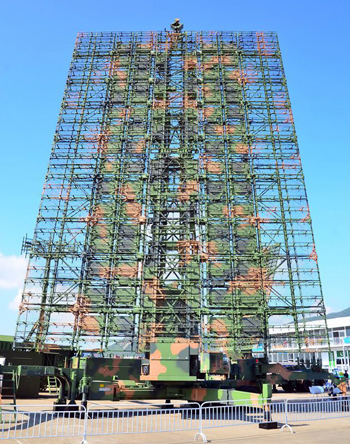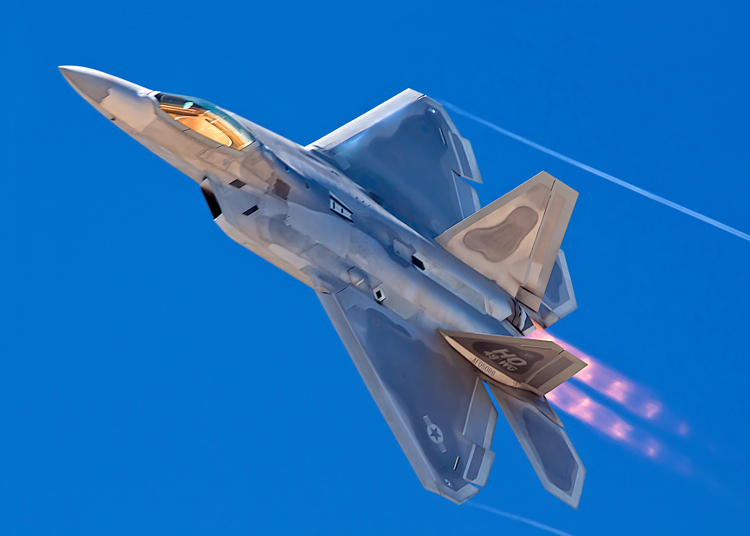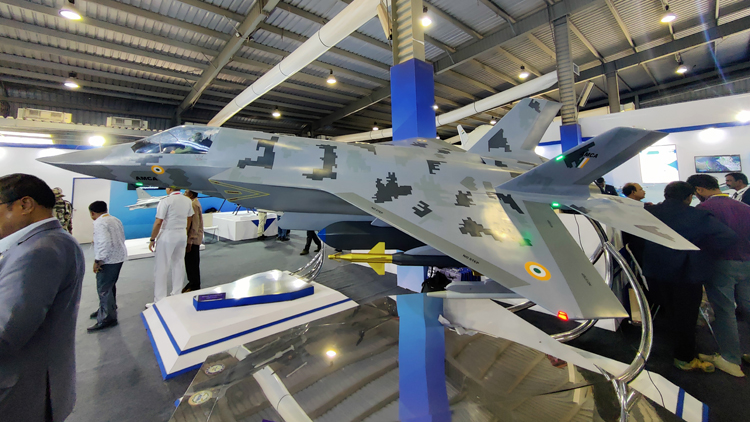INDIAN ARMED FORCES CHIEFS ON OUR RELENTLESS AND FOCUSED PUBLISHING EFFORTS

The insightful articles, inspiring narrations and analytical perspectives presented by the Editorial Team, establish an alluring connect with the reader. My compliments and best wishes to SP Guide Publications.

"Over the past 60 years, the growth of SP Guide Publications has mirrored the rising stature of Indian Navy. Its well-researched and informative magazines on Defence and Aerospace sector have served to shape an educated opinion of our military personnel, policy makers and the public alike. I wish SP's Publication team continued success, fair winds and following seas in all future endeavour!"

Since, its inception in 1964, SP Guide Publications has consistently demonstrated commitment to high-quality journalism in the aerospace and defence sectors, earning a well-deserved reputation as Asia's largest media house in this domain. I wish SP Guide Publications continued success in its pursuit of excellence.
- Operation Sindoor: Resolute yet Restrained
- India’s Operation Sindoor Sends a Clear Message to Terror and the World – ‘ZERO TOLERANCE’
- Japan and India set forth a defence cooperation consultancy framework, talks on tank and jet engines
- Terrorist Attack in Pahalgam in Kashmir: Unfolding a long surgical war against PAK
- Lt General Pratik Sharma takes over Command of Indian Army's Northern Command
Chinese Stealth Radar
China unveils its Stealth Sentinel to unmask covert skies
 |
The Author is Former Director General of Information Systems and A Special Forces Veteran, Indian Army |

Radars work by sending out streams of radio waves, and intercepting them when they return. Radio waves that strike objects in their path will be reflected back, giving defenders warning that intruders are coming. For the attacker to succeed, the goal of stealth technology is to make an airplane invisible to radar. There are different ways to create invisibility: The airplane can be shaped so that any radar signals it reflects are reflected away from the radar equipment. Alternatively, the airplane can be covered in materials that absorb radar signals.
At present, China and the US are the only two countries that have concurrent stealth fighter programmes. The PLA Air Force (PLAAF) views stealth technology as a core capability in its transformation from a predominantly territorial air force to one capable of conducting both offensive and defensive operations. In the case of India, the Advanced Medium Combat Aircraft (AMCA) will be a fifth-generation stealth, multirole combat aircraft with advanced stealth features and the capability to super-cruise as well as data fusion and multi-sensor integration with Active Electronically Scanned Array (AESA) radars. The Indian Air Force (IAF) currently plans seven squadrons (126 jets) of the AMCA.
China's JY-27A radar system is a game-changer in air defence, capable of detecting stealth aircraft like the American F-22 Raptor from 500 km

But this is about stealth radars. China already has a complex air defence system that includes anti-stealth radar stations, especially along the South China Sea (SCS) and the eastern Pacific Ocean coasts. In 2013, Wu Jianqia, lead scientist in the Chinese military's anti-stealth radar programme, claimed that Chinese radar systems could detect and track American F-22 stealth fighter jets. The US F-22 jets are assumed to be most advanced stealth fighters, flying several hundred km off the Chinese coast. The Chinese anti-stealth radar uses waves with a frequency of just over 3.3 feet. According to Jianqia, these low-frequency waves may contact the large parts of the stealth aircraft, like its wings or tail, and produce echo signals that are more than 100 times stronger than those of military radars that use higher frequencies.
Concerns have been expressed in the US about the threat that could be posed by China’s new stealth radar system. US Space Force General David Thompson told Washington Post in December 2021 that US satellites in high orbit are under constant attack from Russia and China, the threats are really growing and expanding and it’s really an evolution of activity that’s been happening for a long time. “We’re really at a point now where there’s a whole host of ways that our space systems can be threatened,” Thompson said, and added that China could surpass the US in the space race.
Deploying anti-stealth radar stations along the South China Sea and Eastern Ladakh, China poses a significant threat to neighbouring countries and beyond
China has been ramping up its air defence capabilities to counter strikes from its neighbours and neutralise aerial threats since 2017. Overlapping the India-China standoff, China has deployed 3-D long-range air surveillance and guidance radar, JY-27A, near Pangong Tso in Eastern Ladakh, as well as at the Mianwali Air Force Base in Pakistan. JY-27A advanced anti-stealth radar system has the capability to detect early signs of airstrike over a radius of 500 km which overlays into parts of Jammu and Kashmir, Himachal Pradesh and Uttarakhand in the northernmost parts of India. Deployment of the Chinese JY-27A at Pakistan’s Mianwali Air Force Base was spotted through satellite images in September 2019.

This JY-27A radar system is adept at detecting stealth aircraft like the American F-22 raptor from 500 km (310 nautical miles) using its active phased array antenna and very high-frequency waves. With its terrain-adaptive measurement technology installed either on land or locomotive, it is resistant to jamming and could also guide surface-to-air missiles (SAM) to strike incoming aircraft. Analysis of satellite imagery suggests that in Eastern Ladakh, the JY-27A radar system has been deployed in the Rutog area of Ngari prefecture, approximately 50 km from the Line of Actual Control (LAC). However, with its detection range of 500 km, it could detect air signals of aircraft and missiles and jets originating from northern India including Ladakh, J&K and Punjab.
China's rapid advancements in space technology and its potential to surpass the US highlights the evolving nature of threats in high orbit
Media has quoted open source intelligence (OSINT) expert Damien Symon reporting another early warning site of JY-27A series radar at the expressway Kargilik in China with its surveillance overlapping into areas of Srinagar. However, according to Indian defence sources quoted by media, China has deployed similar long-distance surveillance radars at five more locations across the LAC, IAF knows their exact locations and capabilities, these radars have been factored into the IAF’s war plans, and plans are in place to avoid, evade, degrade and neutralise these radars by subjecting them to soft and hard kill options within first few hours of the war breaking out.





